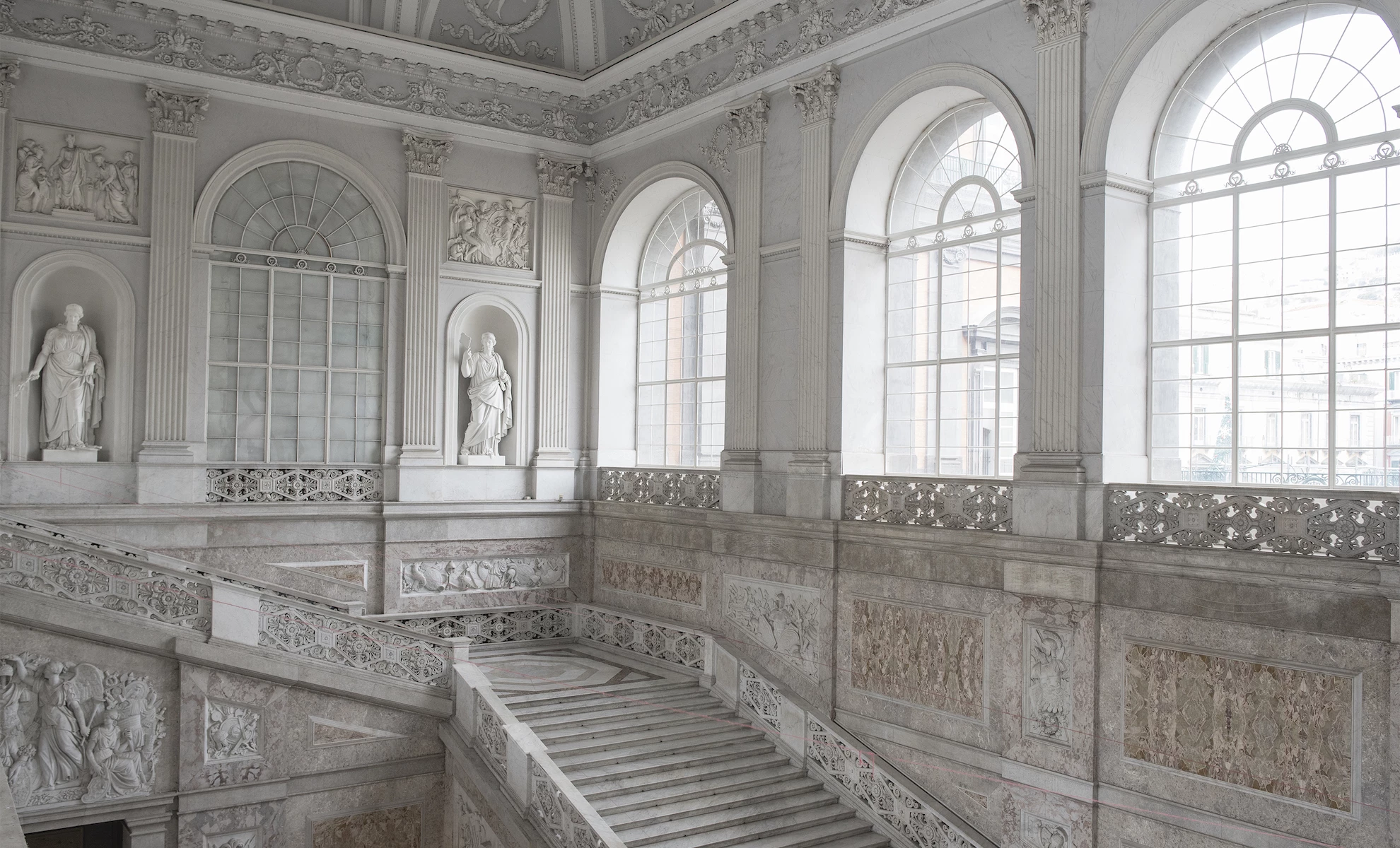In front of the Staircase of Honour of the Royal Palace in Naples, the most romantic dream of stories of princes, love and glass slippers; the lazy among us wonder how many steps they will have to climb to reach the main floor; the most pragmatic wonder where all that marble comes from and how long it took to complete such a majestic piece of work.
Ph. Anna Monaco

Everyone, each from their own point of view, is overwhelmed by beauty. The marble of Mondragone, the veins of the Strait of Sicily, the marble of Vitulano and the white tunnels of the balustrades all make up infinite shades that almost cancel themselves out due to the light breaking through the large windows. And yet it used to be very different.
Indeed, in the middle of the 17th century, Viceroy Oñate complained about the poor lighting of this place, which in his opinion was also cramped for space. That was why he commissioned the architect Francesco Antonio Picchiatti to redo the staircase, following the wonderful Spanish examples. So, that's what was done. The new appointee, who had taken over after the death of Domenico Fontana, designed a sumptuous entrance by demolishing what had already been built, to Oñate's great satisfaction.
Ph. Anna Monaco

Viceroys, then kings, queens, princesses and princes climbed those steps, the scene of many ceremonies: just look at the painting by Antonio Dominici with the nuptial procession of princesses Maria Teresa and Maria Luisa of Bourbon for a taste of a bit of that royal atmosphere. But, in this 1790 work, the staircase is not exactly like the one we see today. Is it perhaps a little poetic licence on the painter's part? No, the staircase was modified again a few decades later, this time not at the whim of a sovereign but to compensate for what a terrible fire had destroyed in 1837.
Ph. Anna Monaco

Ferdinand II turned to Gaetano Genovese, a very active architect at court, to restore the residence, including the staircase. The artist made some changes, for instance by creating four niches in which to place the plaster statues that can still be seen today: these are the virtues, each with its own attributes. Among them, a woman with a mirror, not a symbol of vanity, attracts your attention; through the mirror, she looks inside herself to know what way is best to go. This is Prudence: the virtue that guides all others.
Ph. Anna Monaco

Looking up beyond the niches, between the "embroidery" that quilts the pavilion vault, two symbols do not escape your eye: the rampant horse that indicates the Kingdom of Naples, and the Trinacria, the ancient name for Sicily. A few more steps and you reach the wide and bright loggia, from which you can enjoy a special view: you can see the Vomero hill in the distance with the Certosa and Castel Sant'Elmo.
Ph. Anna Monaco

A few steps and you could enter the Court Theatre but it is getting late. The two cast iron street lamps of the Real Fabbrica di Pietrarsa at the base of the staircase have also been lit, it is time to leave. Do be careful though not to go down the stairs too quickly, you know how certain stories end.

